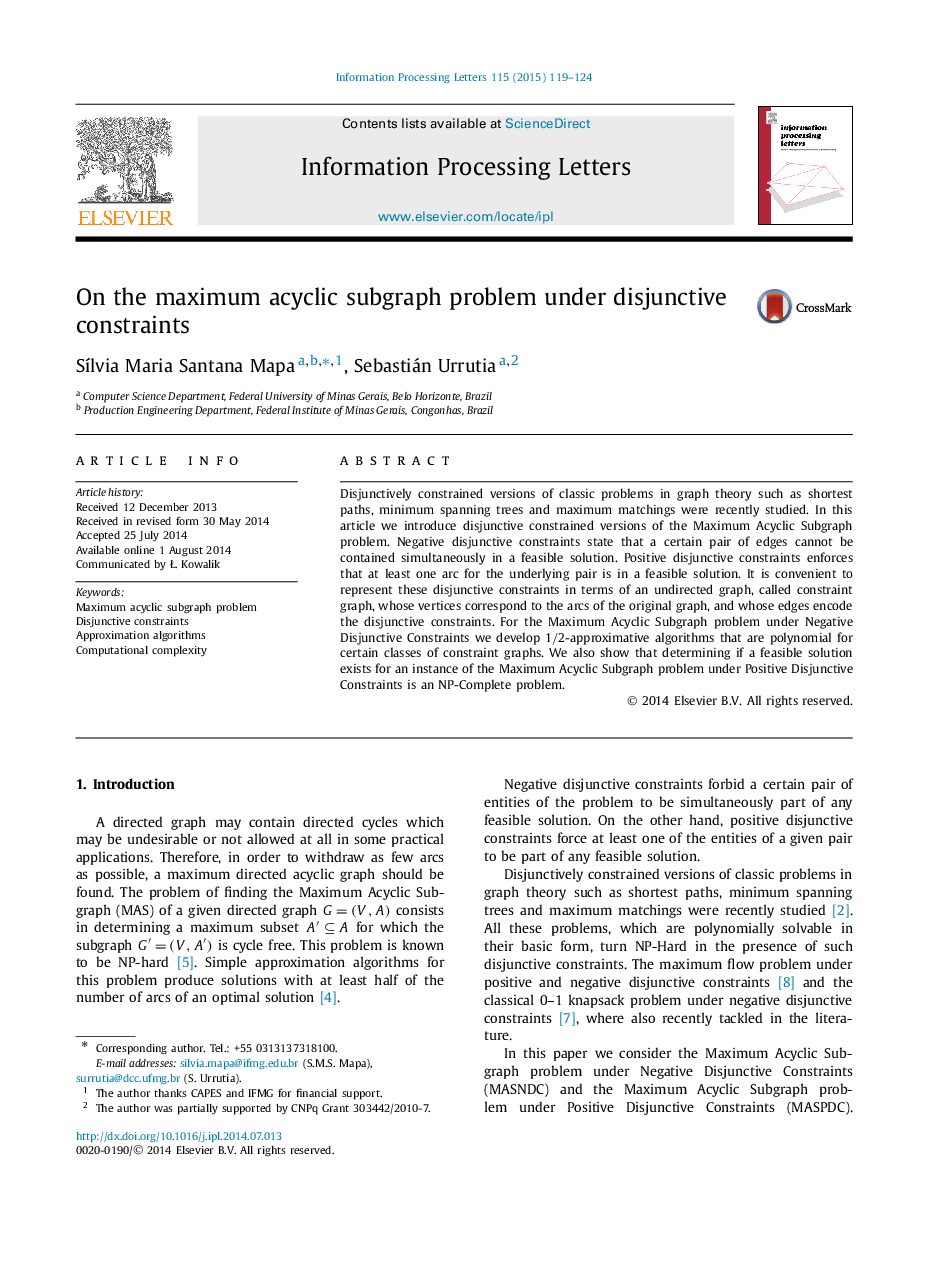| Article ID | Journal | Published Year | Pages | File Type |
|---|---|---|---|---|
| 10331870 | Information Processing Letters | 2015 | 6 Pages |
Abstract
Disjunctively constrained versions of classic problems in graph theory such as shortest paths, minimum spanning trees and maximum matchings were recently studied. In this article we introduce disjunctive constrained versions of the Maximum Acyclic Subgraph problem. Negative disjunctive constraints state that a certain pair of edges cannot be contained simultaneously in a feasible solution. Positive disjunctive constraints enforces that at least one arc for the underlying pair is in a feasible solution. It is convenient to represent these disjunctive constraints in terms of an undirected graph, called constraint graph, whose vertices correspond to the arcs of the original graph, and whose edges encode the disjunctive constraints. For the Maximum Acyclic Subgraph problem under Negative Disjunctive Constraints we develop 1/2-approximative algorithms that are polynomial for certain classes of constraint graphs. We also show that determining if a feasible solution exists for an instance of the Maximum Acyclic Subgraph problem under Positive Disjunctive Constraints is an NP-Complete problem.
Related Topics
Physical Sciences and Engineering
Computer Science
Computational Theory and Mathematics
Authors
SÃlvia Maria Santana Mapa, Sebastián Urrutia,
